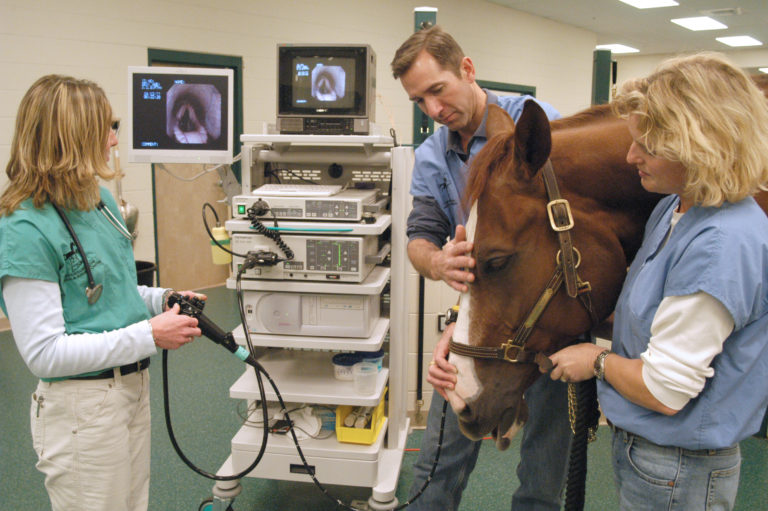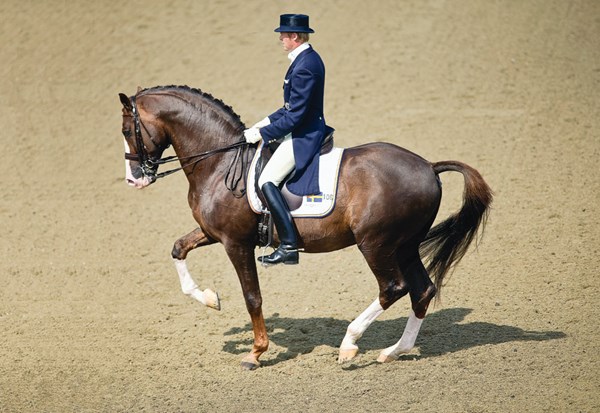
Over the years, I have seen what it takes to get to the top of the sport as a competitor, horse trainer and coach. If I could sum it up in one sentence, it would be this: The rider that is best in a unified whole wins. That means you can achieve success only with a holistic approach to the mental and physical health of both the horse and rider. In the following article, I have outlined how to achieve these must-haves.
The Focused Rider
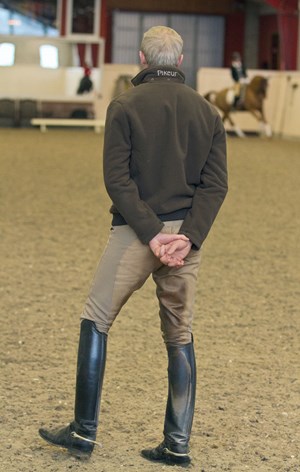
Lonely is not strong, and the best riders surround themselves with supportive mentors, family, friends, horse owners and/or sponsors. Having a network to count on for help allows a rider to more easily focus on the necessary ingredients of good dressage riding: psychological strength, drive, technical skill, talent and physical ability.
In dressage, the best riders develop psychological strength as a key ability because it takes a positive attitude, strong will, good work ethic, humbleness, stubbornness and overall horsemanship to succeed. You have to accept that success and failure never last in this sport, so you have to take each in stride and not make too much of a deal out of either—it is just another day at work. In the end, the best riders have this strength and an undying drive to continue because a rider still has to take care of the horses and get back in the saddle tomorrow and the day after that since this is not only a sport, hobby or business, but a lifestyle that lasts a lifetime.
I strongly encourage riders to seek the help of a trainer or coach who can help build on these skills. Remember that no rider can do this alone. Find someone who can strengthen your self-confidence. Take what he teaches you and write it in a book every day. Review your competition videos with your trainer after you get back from the show. Communicate with him about what is working for you and question a trainer who takes your confidence away. Video your lessons and watch them at home when you have more time to focus on your instructor’s words rather than ride your horse.
The Fit Rider
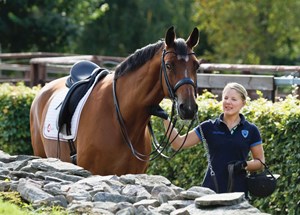
With your trainer, develop your technical skill. A dressage rider needs coordination, timing, experience and theoretical knowledge. The good news is that these can all be learned with quality instruction and focused training time.
While talent (feel and body control) is something not every rider is born with, adding unmounted exercises to your program can develop these abilities. Pay attention to stretching, balanced weight-lifting and cross-training to get the most out of your dressage work.
In time, with correct training in and out of the saddle, a rider’s physical ability will also improve. The more time spent on training, the more it becomes apparent how highly critical a rider’s contribution is to the partnership. No horse can work in a good way when his rider is unskilled, unfit and unbalanced.
Take, for example, the rider’s seat and how it affects the horse’s mouth. If a rider lacks core stability and/or coordination, the contact will suffer. This is because the unbalanced rider uses the reins for support. While a purposefully strong hand can be used in specific short moments for certain corrections, contact is developed only with soft, supple hands. This happens when balance comes from the lower back and abdominal muscles.
Test yourself—balance: If you are not sure whether you incorrectly balance with your hands, pat your horse on the neck while you are working. If you lose your balance when you give the rein forward, you are not using your core muscles for stability in the right way.
The Happy Horse
While the horse and rider both need mental and physical development, the approach is somewhat different. We must recognize that a horse is a horse—he is not a machine—but we also cannot humanize him. For a horse, the end does not justify the means. He does not see the big picture, and while we have our objectives and goals, he has only talent and tolerance. While the horse also needs psychological strength, drive, technical skill and physical ability, the approach is very different.
Just as the best riders have psychological strength, so must the horse. In his case, this comes from mental relaxation.First, a horse must have access to quality food, water and shelter. From exposure to nature and lots of light, whenever possible, to working pain-free, it is important that there are no unnecessary stressors in his life.
When a horse is happy, he is motivated. Drive can be achieved through mental relaxation combined with variety in his training. I don’t just school dressage movements, but hack, jump and gallop when I can. Turnout and hand-walking are something I do with all of my horses. They need to be exposed to different surroundings and footing for their physical and mental well-being. For this reason, I like to hand-walk on hard ground for 30 minutes each day—it gets the horses out and helps strengthen their legs in a relaxed way. I also appreciate the contact between horses and people in various ways besides riding, which is why I do not have a walker.
The Fit Horse
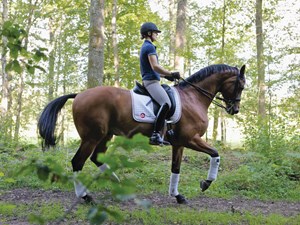
I always have a plan in dressage training, but horses are all different so I am open to different systems and approach situations individually. What I commit to is a focus on continual learning to develop my horse’s technical skill and physical ability. That means that a horse (or student) is pushed from his comfort zone into his “stretch zone” to improve. However, I never push beyond that into the panic zone. If we accidentally end up there, I always return the horse to the comfort zone before returning to training in the stretch zone.
Training begins (and ends) with 20 minutes of walk warm-up. I try to do this in nature, whenever possible. Once the horse is loose, I approach my rides with flexibility. Here is a sample of exercises that test and train a horse holistically:
Test your horse—straightness: An easy way to check for straightness is to begin on a straight line off the track, riding toward a mirror if it is available. Check that you can ride a straight line without the help of the rail. If a horse is properly connected on the outside rein and his shoulder is not popping out, you will be able to achieve this task without him leaving that line. At the same time, ask yourself if the horse is in the correct frame for his level of training. I never continue in an exercise until I can confirm that a horse is not too deep or above the bit in his contact.
I will move on to riding a square to check that I have control of the outside shoulder on the turning line, still checking that I am not encouraging my horse to become too deep or high in the contact. I might then move on to a 20-meter circle. Again, I check that my horse is on my outside rein and not falling out through his outside shoulder. If he is, I might return to the straight line.
Test your horse—adjustability: When I have confidence in my horse’s straightness, I begin to vary the length of the steps and the speed on a circle. I begin by riding longer and shorter steps in the trot without changing the tempo. These adjustments of tempo and steps are the prerequisite to developing control of his hindquarters in more advanced transitions. Think of varying the tempo of the steps as asking for a quicker or slower collected trot with the same length of the steps. Varying the length of the steps is transitioning between a passage and piaffe that are the same rhythm and tempo but change the covering of the ground per beat.
When I know I have the ability to check appropriate neck height, straightness and rhythm/tempo/speed, I will move on to more advanced work. At this point, I like to play with what seems most suitable to the horse’s skills. Remember, I am not going to push a horse out of his stretch zone, but he must work on things that are out of his comfort zone to learn.
For example, I might ride shoulder-in to travers on the quarterline or diagonal. A similar exercise would be riding shoulder-in to half pass back to shoulder-in in trot and canter. Just as the rider’s unmounted work develops body control and feel, these technically difficult exercises test your horse’s same skills. I don’t settle for riding simple movements when combinations like these can improve strength and flexibility.
Regardless of the level, I always remember that training should be fun and playful, never greedy. The focus should be on the correct physical development and mental support of the horse and rider, so that both have strength, flexibility and self-confidence. Together, this unified whole will achieve success.
The Training Scale in Sweden
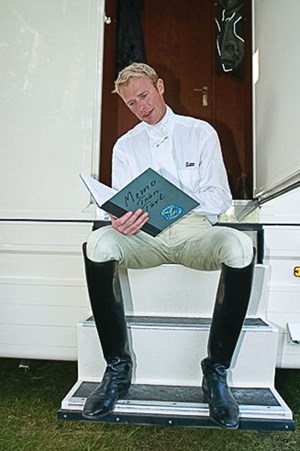
The first mention of the Training Scale in its current form in Swedish was in the training manual Reitvorschrift (first published in 1937), though the principles and the parts of the Training Scale go back to classical dressage. Reitvorschrift is the predecessor to Ridhandboken, a translation of the German association’s Richtlinien für Reiten und Fahren (Guidelines for Riding and Driving). In this updated translation, the Training Scale is a direct translation from the German Scale der Ausbildung. However, not all of the words carry the same meaning when read in Swedish versus German.
While “scale” in German means “ladder” or “stairs,” the Swedish translation is different. It either refers to the form of a collection of tones (like Do-Re-Mi) or as a designation for the proportions between a representation and reality (as on maps).
Durchlässig is translated into permeability, but what we’re talking about is rideability. Ein durchlässiges Pferd, therefore, does not mean the Swedish translation of “a permeable horse” but rather a rideable horse (a collective term for what is intended throughout our dressage training).
Because the Training Scale cannot be interpreted literally, I prefer to use it as a picture of what the horse’s training should include. Consider it a number of milestones. We’re not talking about a scale really, but about several pieces and modules that we work with—all the parts forming the base of the horse’s training. Here are the definitions of the Swedish Training Scale modules that we use in dressage:
Takt means that the horse’s movements should be regular—all four legs move at the same speed, as far and as high—in all gaits. As a rider, you must know how your horse moves and practice the feel of where his legs are and the footfalls in each gait.
Lösgjordhet is displayed when the horse works. He is physically and mentally relaxed with his whole body, with a flexible spine and naturally rhythmic movements. When the rider gives the reins, the horse extends forward and downward while maintaining speed and carrying capacity.
Kontakt/Stöd is a soft, steady contact between the rider’s hand and the horse’s mouth, developed through the acceptance of the bit.
Schvung is a transfer of energy from the back and hind legs into a forward-going movement. To energetically lift the front and the hind legs underneath the body in the elevated moment of the trot and canter is the hallmark of a movement with impulsion. This is where you get the impression that the horse takes the rider with him in an uphill movement (“rear-wheel drive plugged in,” if you will).
Rakriktning is confirmed when, from the front, someone on the ground can see only the horse’s front feet because the back are moving on the same track. It sounds simple, but requires a lot of work for most horses. It requires the horse to travel smoothly and use both hind legs equally. Dressage work is, after all, to make the horse equilateral and equally rideable.
Samling is when you reach collection and your horse bears his and your weight evenly on all four legs. A horse naturally carries 60 percent of his weight on the front, and when you sit just behind the withers, the distribution is even worse. In the collected work, he moves weight to the hind legs through the increased bending of his hips, knees and hock joints. The weight transfer allows his forehand to move more freely and his stride to become shorter with more energy and activity.
Ridbarhet means that the horse is obedient, relaxed and focused. He answers your forward and lateral aids and works with his whole body. This is the ultimate sign that a horse is ridden correctly. You can comfortably sit even when he is active.
Jan Brink is a successful international competitor, trainer and instructor. He has been a long-time member of the Swedish team, with highlights including the 2000, 2004 and 2008 Olympic Games, the 2002 World Equestrian Games and the 2007 World Cup. Brink works tirelessly to develop the next generation of athletes at his Tullstorp Dressage Stables (tullstorp.nu/en/).









